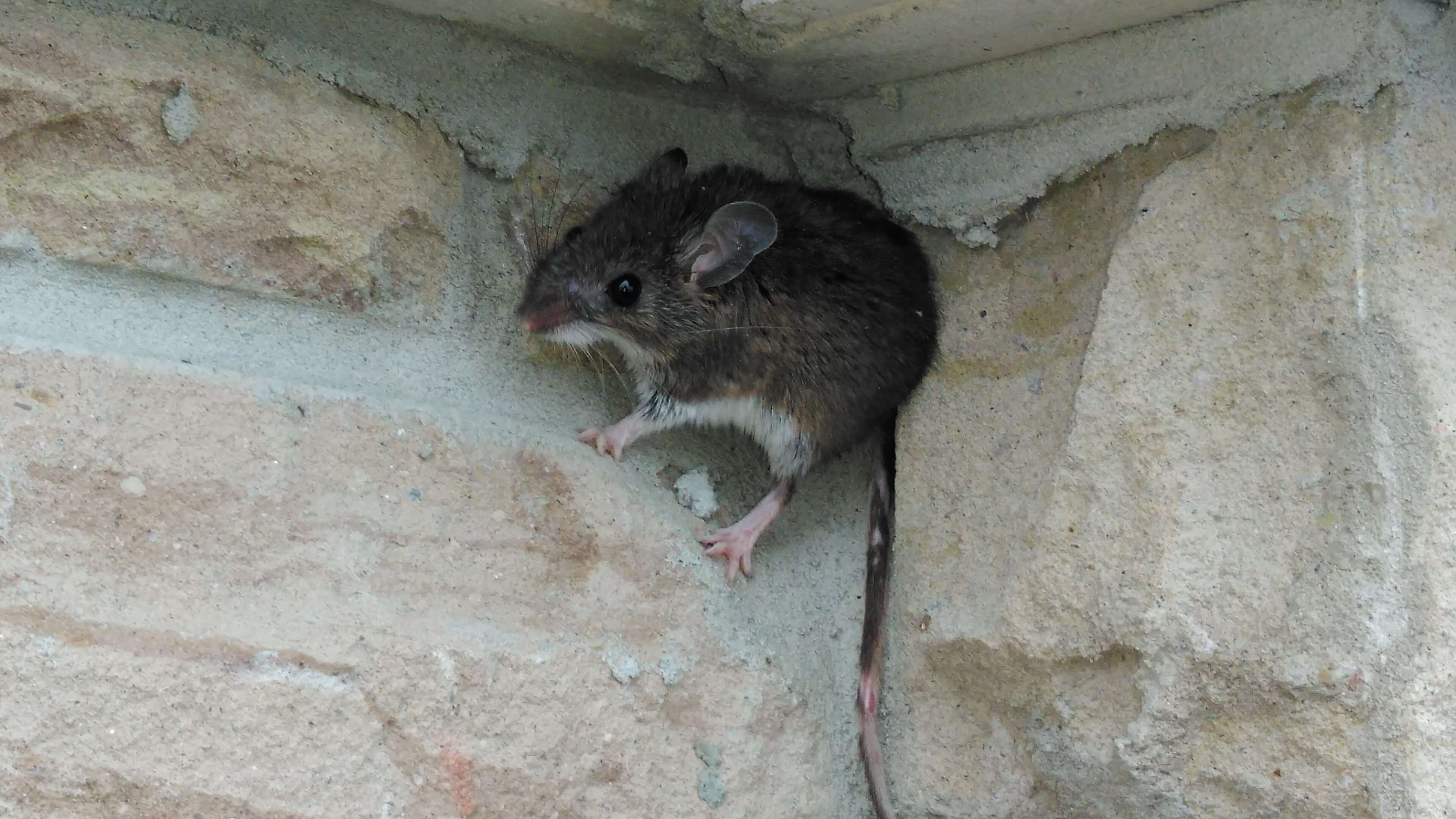Preventing mice from entering your home can be tricky. Mice have the ability to manipulate their bodies into small spaces so they can easily enter your home through a crack or tiny hole in the wall. Mice like to live in attic spaces of the home due to the materials located in this area. Mice can easily make nests in the ceiling or insulation, creating a nice cozy home for themselves and their babies. The attic can give mice access to your walls and other areas of the home, so they can easily find and store food or nesting materials.

A house mouse climbing up a stone wall
Mice can gain access to the attic in a variety of ways. They might climb up the sides of your home and gain entry or use trees to find an access point via the roofline. Mice tend to spend the spring and summer months gathering food items to store for the winter inside your walls and attic space. During the fall, mice activity will peak as the creatures return to their nests indoors once the temperatures start to drop.
Common Entry Points for Mice
While every home is different, there are common entry points that mice use to gain access to walls and attics. Weep holes found between bricks of the home allow mice to walk right into the walls to gain access to the home. These holes are on the exterior and are designed to allow water to work its way outside of the foundation. The vents help the brick last longer but are common areas in which mice find a way inside your home.

Mouse activity inside an attic
Gaps in building materials are another way that mice enter the home. From siding/foundation gaps to roof/soffit gaps, mice can easily find a way into your home via these small areas. Even utility and HVAC lines provide a spot for mice to work their way into your home. Doors and windows can have openings around the frames that provide the perfect space for a mouse to squeeze through. Once inside, the mice begin to make your home their own and with a high reproductive rate, you may soon find that your attic has become a mouse hotel!
Professional Assistance
Because mice have countless points of entry into your home, it is essential that you work with the experts in order to have all these points identified. Once the home has been assessed, the wildlife technician will be able to provide a plan of action as part of their rodent control services. The plan of action will see the mice captured in a humane way and removed from your home.
The next step is to clean and clear the mess left behind by the rodents. Mice can carry several diseases that are transferred via urine and feces. It is important to clean up after these creatures to ensure that your home is not affected by such diseases as hantavirus and rat bite fever.
At Skedaddle Humane Wildlife Control, we can assist with mice removal service for your home. Contact our office today to find out more about our mice removal options and how we can help you get rid of these rodents.


